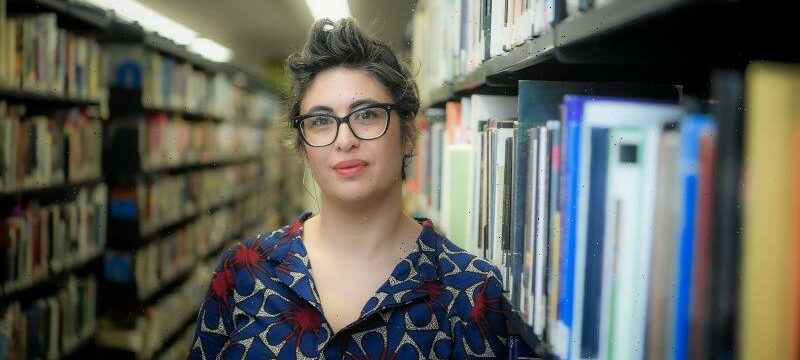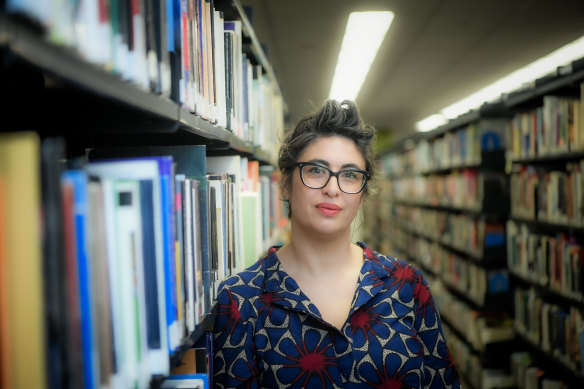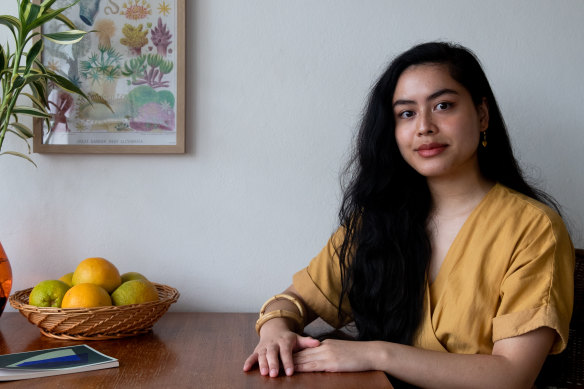People of colour are dramatically under-represented in the ranks of published authors in Australia, according to a new report from Victoria University.
But the first ever First Nations and People of Colour Count found that the percentage of Indigenous authors published almost precisely corresponded to the 3.2 per cent of the population who identified as Indigenous in the 2021 census.
The report examined the cultural identity of the writers of 1,531 books that were published in 2018. These included novels, non-fiction, poetry, young-adult and picture books. While 3 per cent of the authors were Indigenous, only 7 per cent of the books were written by people of colour. According to recent statistics, about one in four Australians are from non-European backgrounds.
Natalie Kon-yu says the number of people of colour authors published is small, but improving.Credit:Justin McManus
The lead researcher, Natalie Kon-yu, a senior lecturer in creative writing and literary studies at the university, said the number of people of colour with published works was “really small”. The report defined people of colour “as pretty much non-European background [which is also the] OECD definition”.
“The problem is a broader one, about how Australia sees itself, who it still sees as belonging unproblematically to the idea of Australia.”
Kon-yu said not everyone in Australia was able to tell their story, and the report confirmed an imbalance that had long been suspected.
“Indigenous culture is the first culture of this nation and we think their stories should be better represented in the industry. But how much of our national literature comes from that population?”
She said the number of books published in Australia in 2018 was close to 5,000 but certain categories such as cookbooks and others had been excluded.
Kon-yu said the information was taken from the way authors identified themselves in a professional context: “It was based on whatever they had said about their identity, not what they’d been labelled by other people.”
Of the 481 works of fiction in the report, only 1 per cent were written by First Nations authors, and people of colour wrote 7 per cent.
Authors of colour were best represented in poetry (11 per cent) and children’s books (11 per cent).
Award-winning poet Eunice Andrada, who migrated from the Philippines as a young teenager, published her first collection, Flood Damages in 2018. She said the findings of the report didn’t surprise her at all.
Eunice Andrada welcomes the increase in mentoring opportunities for authors of colour.Credit:Edwina Pickles
“I guess it does validate my experience coming up in Australian literature,” she said. “I started publishing when I was 16, a year after immigrating here and, even then, it was already so isolating trying to find the work of other people of colour, but specifically other Filipino poets in Australia.
“At the time I was writing Flood Damages, I could count on my fingers how many of them there were.”
She said things had improved since, and she welcomed the growing number of mentoring opportunities for young people of colour: “I think those are especially important.”
Kon-yu said she expected the Victoria University report would be updated in the future. “We are interested in looking more deeply and more widely at the literary ecosystem and talking to people about it to try to get a bigger answer.”
But she did feel that things had improved since 2018. “I don’t have the hard data to back that up. [But] there’s certainly an awareness that there’s a problem and I think people are acting in that way, which is good. I want to get to a place where we can make some recommendations with some concrete interventions.
“This is a first step. It gives us a clearer idea of what the industry was like not so long ago. And then it’s a place to work from.”
The Booklist is a weekly newsletter for book lovers from books editor Jason Steger. Get it delivered every Friday.
Most Viewed in Culture
From our partners
Source: Read Full Article


